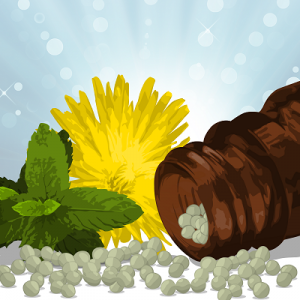 Classical homeopathy is based on the law of similar, the proving of remedies with healthy volunteer subjects, and the potentization (dilution and succussion = shaking) of the source substances. Observing all of the principles is essential for successful homeopathic cure.
Classical homeopathy is based on the law of similar, the proving of remedies with healthy volunteer subjects, and the potentization (dilution and succussion = shaking) of the source substances. Observing all of the principles is essential for successful homeopathic cure.
1 – The Law of Similar
The Law of Similar is considered the primary principle of homeopathy. It says that the curative remedy is to match a patient’s symptoms as close as possible. In other words, homeopathy functions and works with the recognition and understanding of the patient.
When the homeopath recognizes and understands the sick person’s personality including all of his complaints, his moods and state of mind, the homeopath will be able to find the homeopathic remedy that matches to the patient’s condition.
2 – Proving of the Remedies
Provings are single and double-blinded experiments which yield the knowledge of the action of a remedy.
In a proving of a substance, small doses are given to groups of healthy volunteers who later record their detailed reactions to the test substance.
The leader of the proving collects and records any symptoms and changes reported by the provers over a period of one year. These may be simple physical sensations such as nausea in the morning, or heartburn after drinking coffee.
Also, symptoms of the mind and moods such as sadness, cheerfulness, and ambition are included. In addition, dreams, fears and special incidents during the period of proving are considered.
Provings with healthy individuals allow the creation of remedy pictures. A remedy picture is a list of characteristic symptoms that were experienced by the provers. Frequently, the provers experience similar symptoms. It’s not uncommon for provers to dream of the same subject even though the provers are not allowed to communicate on their proving experience during the proving period
3 – Potentization
Potentization of the source substance of the remedy is the third principle. Homeopathy uses substances derived from plants, animals, minerals, chemicals and nosodes. (Nosodes are pathogens.) Those substances are not administered in their original rude form.
Instead they are diluted and vigorously shaken (succession). Dilution and succession unlock the scope of action and potentizes the effects of a remedy. The process of potentization eliminates toxicity of any toxic substance such as arsenic, belladonna, or a pathogen.
4 – Single Dose Remedy
Only one remedy at a time is given in the smallest possible amount.
Observing the principles of classical homeopathy allows gentle, safe and effective healing as described and recorded by Hahnemann. It is an individual prescription tailored to the unique condition of a person.






